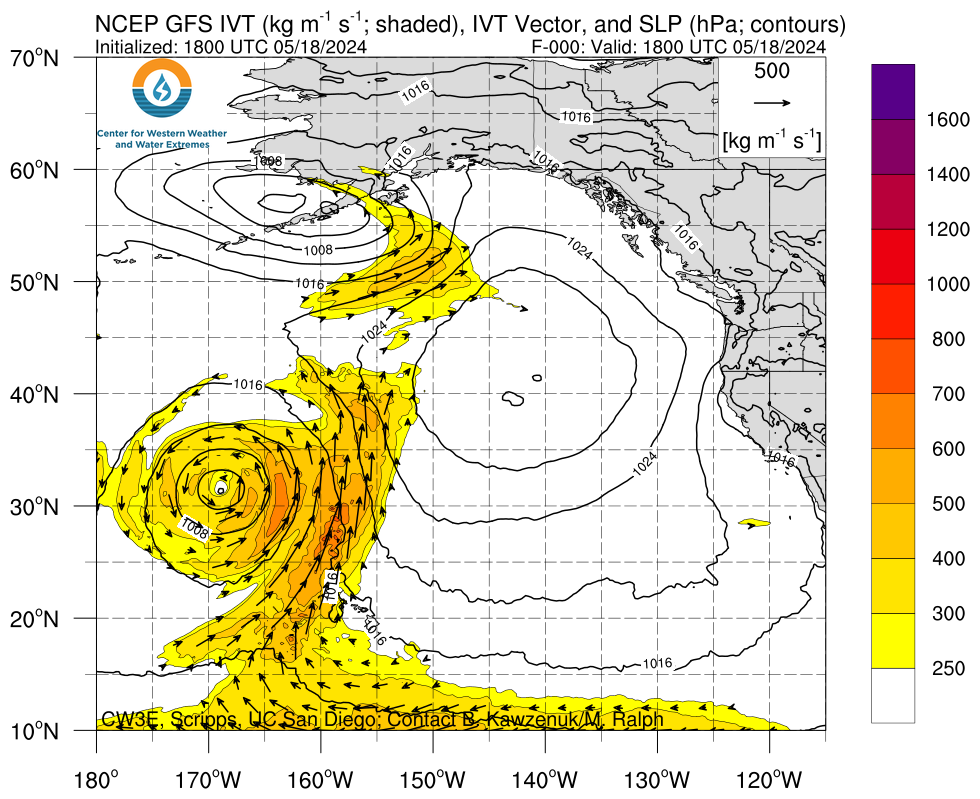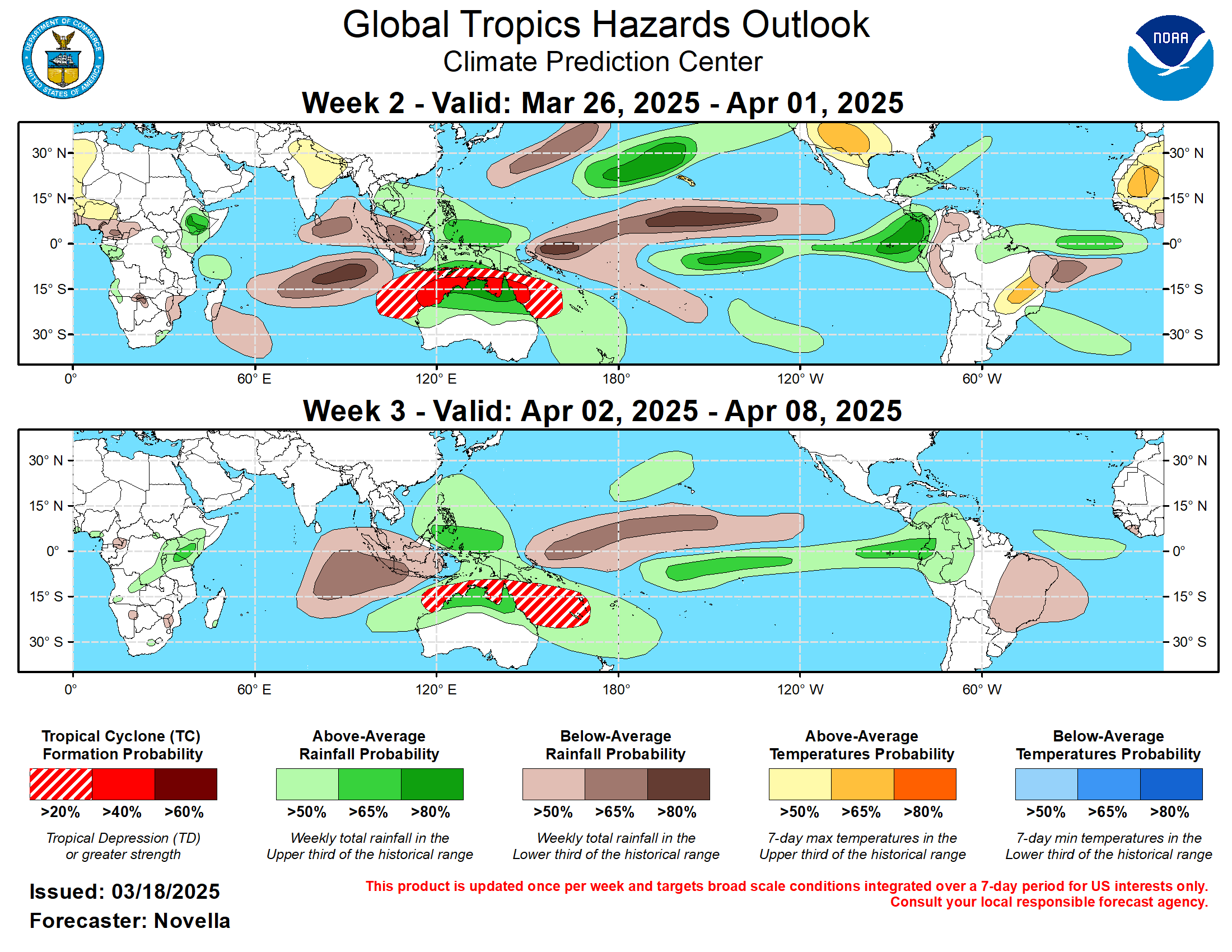This article focuses on what we are paying attention to in the next 48 to 72 hours. The article also includes weather maps for longer-term U.S. outlooks and a six-day World weather outlook which can be very useful for travelers.
First the NWS Short Range Forecast. The afternoon NWS text update can be found here after about 4 p.m. New York time but it is unlikely to have changed very much from the morning update. The images in this article automatically update.
Short Range Forecast Discussion
NWS Weather Prediction Center College Park MD
Tue Sep 10 2024
Valid 12Z Tue Sep 10 2024 – 12Z Thu Sep 12 2024…Life-threatening storm surge and hurricane-force winds, as well as the
risk of considerable flash flooding are forecast across southern Louisiana
on Wednesday as Francine approaches……Heavy rain expected to impact parts of the northern Rockies by
midweek……Elevated to critical fire weather concerns across much of the
Intermountain West…As of early this morning Tropical Storm Francine continues churning in the
western Gulf of Mexico just to the southeast of Brownsville, Texas and
moving on a gradual northward motion. Francine is forecast to strengthen
into a hurricane before an expected landfall in southern Louisiana on
Wednesday. As the system approaches the central Gulf Coast and eventually
pushes inland across Louisiana, an increased threat of life-threatening
storm surge, hurricane-fore winds, and considerable flash flooding is
anticipated. Rainfall amounts of 4 to 8 inches, with local amounts up to
12 inches are forecast across much of central/eastern Louisiana and
Mississippi through Thursday night. Francine is then forecast to continue
its trek northward into the Mid-South on Thursday, while quickly
weakening. However, additional heavy rainfall and flash flooding concerns
are possible into western Tennessee neighboring regions. A stationary
front extending eastward from the center of the storm over the next few
days will also focus areas of numerous, slow-moving thunderstorms capable
of containing intense rainfall rates between the Florida Peninsula and
central Gulf Coast. Residents are reminded to remain weather-ready and
never drive across flooded roadways.The only other section of the Lower 48 expecting chances for heavy rain
through midweek are parts the northern Rockies as a deep upper-level low
crosses over the region. A few inches of rainfall throughout northwest
Montana could lead to an increased risk of flash flooding on Wednesday,
which has prompted a Slight Risk (level 2/4) of Excessive Rainfall. This
storm system will also produce gusty winds throughout the Intermountain
West and lead to fire weather concerns. Specifically, the Storm Prediction
Center has issued a Critical Fire Weather area for much of Nevada and
western Utah. Current and continued wildfire activity over the Great Basin
will further add to the smokey skies noticeable throughout the northern
Plains, Midwest, and parts of the Ohio/Tennessee valleys.High temperatures will remain above average average and into potentially
dangerous levels across parts of southern California and the Southwest
today before a quick cooldown commences by midweek. Meanwhile, upper
ridging in the north-central U.S. is expected to produce more summer-like
afternoon temperatures into the upper 80s and low 90s as far north as the
northern Plains and Upper Midwest by Thursday. These temperatures equate
to around 10 to 20 degrees above average, but are not expected to break
many daily records.

To get your local forecast plus active alerts and warnings click HERE and enter your city, state or zip code.
Learn about wave patterns HERE.
Then, looking at the world and of course, the U.S. shows here also. Today we are looking at precipitation.
Please click on “Read More” below to access the full Daily Report issued today.
| Notices: What would you like to learn about? Please provide that to me via the comment section at the end of the article. |
Now more detail on the 48-Hour Forecast (It is a 48 to 72 Hour Forecast actually)
Daily weather maps. The Day 1 map updates twice a day and the Day 2 and 3 maps update only once a day. These maps update automatically. But if that does not happen, you can get updates by clicking HERE
TODAY (or late in the day the evening/overnight map will appear) (Key to surface fronts shown on maps and you will then also be able to insert a city name or zip code and get a local NWS forecast).
TOMORROW
NEXT DAY
We have a new animation of the forecast which shows how things may play out over the next 60 hours. To update click ANIMATION. Doing so will get you to the dashboard. You can then step through the animation or hit LOOP on the upper right of the display. You will have to hit the back arrow ← at the top left on your computer to get back into this article. It is a little more trouble than before but I think NOAA scrapped the animation routine I was using so we have to keep up with “progress”.
The NWS Climate Prediction Center’s: Watches, Warnings, and Advisories plus other information can be found HERE. That takes you to the NWC Severe Weather Site. From there you can select among many categories of information. Remember to hit the back arrow ← at the top left of your screen to return to this article.
ATMOSPHERIC RIVERS
This tells us what is approaching the West Coast. Click HERE to update If I have not gotten around to doing the update. Here is some useful information about Atmospheric Rivers.
Below is the current five-day cumulative forecast of precipitation (Updates can be found HERE)
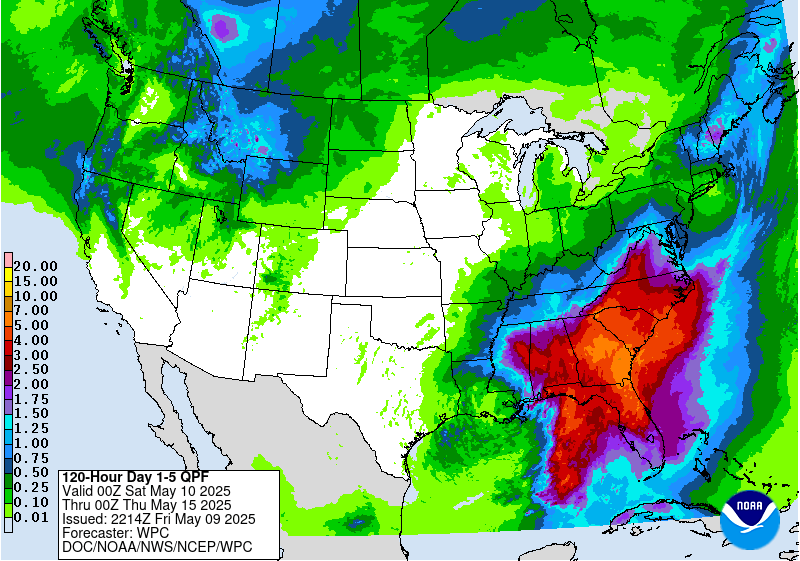
Ski SnowReports will Resume in the Fall.
Now we look at Intermediate-Term “Outlook” maps for three time periods. Days 6 – 10, Days 8 – 14, and Weeks 3 and 4. An outlook differs from a forecast based on how NOAA uses these terms in that an “outlook” presents information as deviation from normal and the likelihood of these deviations.
Below are the links to obtain updates and additional information. They are particularly useful if you happen to be reading this article significantly later than when it was published. I always try to provide readers with the source of the information in my articles. These links may also be useful for those viewing this article on a cell phone or other small screen.
| Days 6 – 10 (shown in Row 1) | Days 8 – 14 (Shown in Row 2) | Weeks 3 and 4 (Shown in Row 3 but updates only on Fridays) |
| https://www.cpc.ncep.noaa. gov/products/predictions/610day/ | https://www.cpc.ncep .noaa.gov/products/predictions/814day/ | https://www.cpc.ncep.noaa.gov/products/predictions/WK34/ |
Showing the actual maps. They should now update automatically. The Week 3 – 4 Outlook only updates on Fridays. So below is what I call the Intermediate-term outlook. On Fridays, it extends out 28 Days. That declines day by day so on Thursday it only looks out 22 days until the next day when the Week 3 – 4 Outlook is updated and this extends the outlook by one additional week.
| 6–
10
|
|
|
| 8–
14 |
|
|
| 3–
4 |
|
|
HAZARDS OUTLOOKS
Click here for the latest complete Day 3 -7 Hazards forecast which updates only on weekdays. Once a week probably Monday or Tuesday I will update the images. I provided the link for readers to get daily updates on weekdays. Use your own judgment to decide if you need to update these images. I update almost all the images Friday Night for the weekend edition of this Weather Report. So normally readers do not need to update these images but if the weather is changing quickly you may want to.
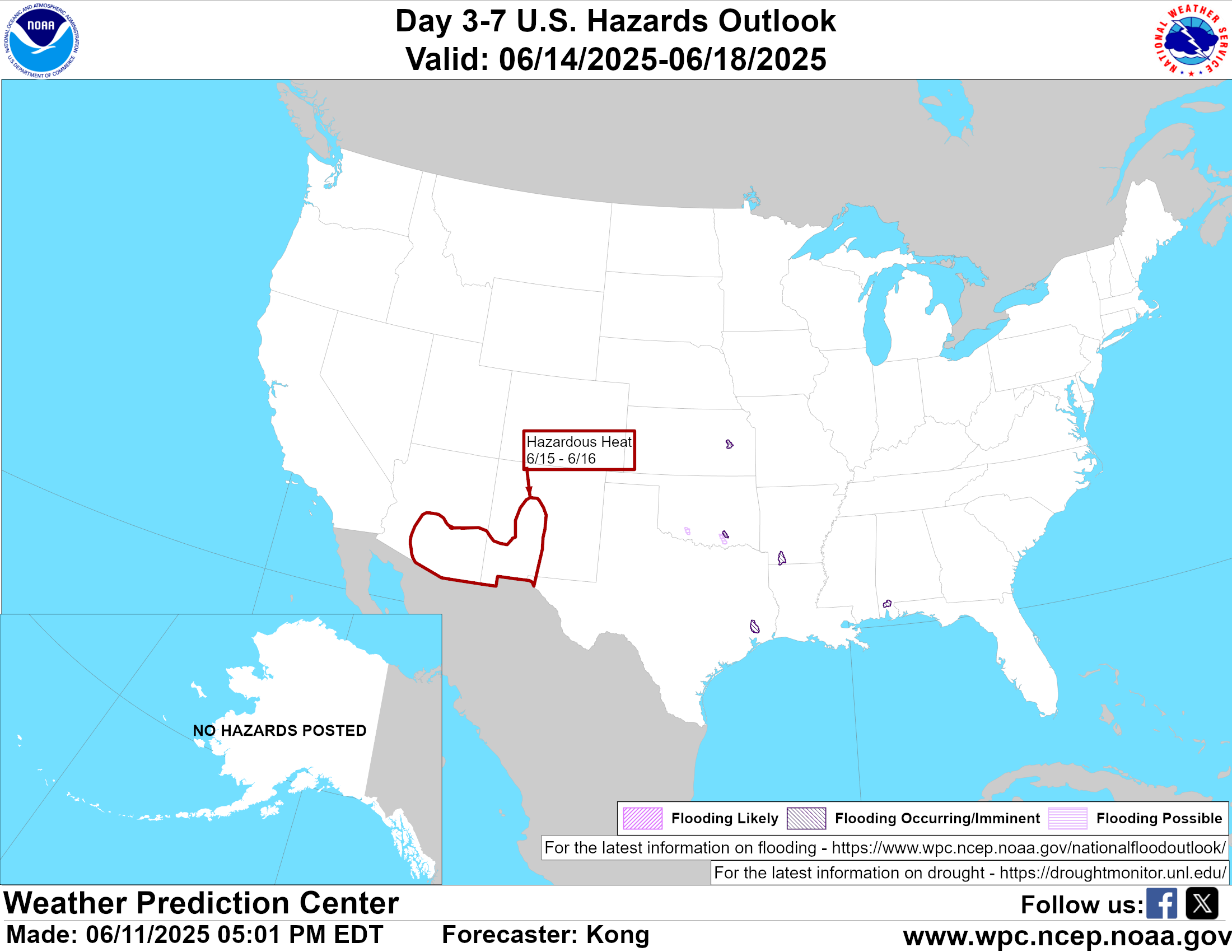
Temperature month to date can be found at https://hprcc.unl.edu/products/maps/acis/MonthTDeptUS.png
Precipitation month to date can be found at https://hprcc.unl.edu/products/maps/acis /MonthPNormUS.png
World Forecast [that website is has been intermittent so be patient]
Below are the Day 1 -3 and 4-6 forecasts for temperature and precipitation. Updates and much additional information can be obtained HERE
World Temperature Anomalies

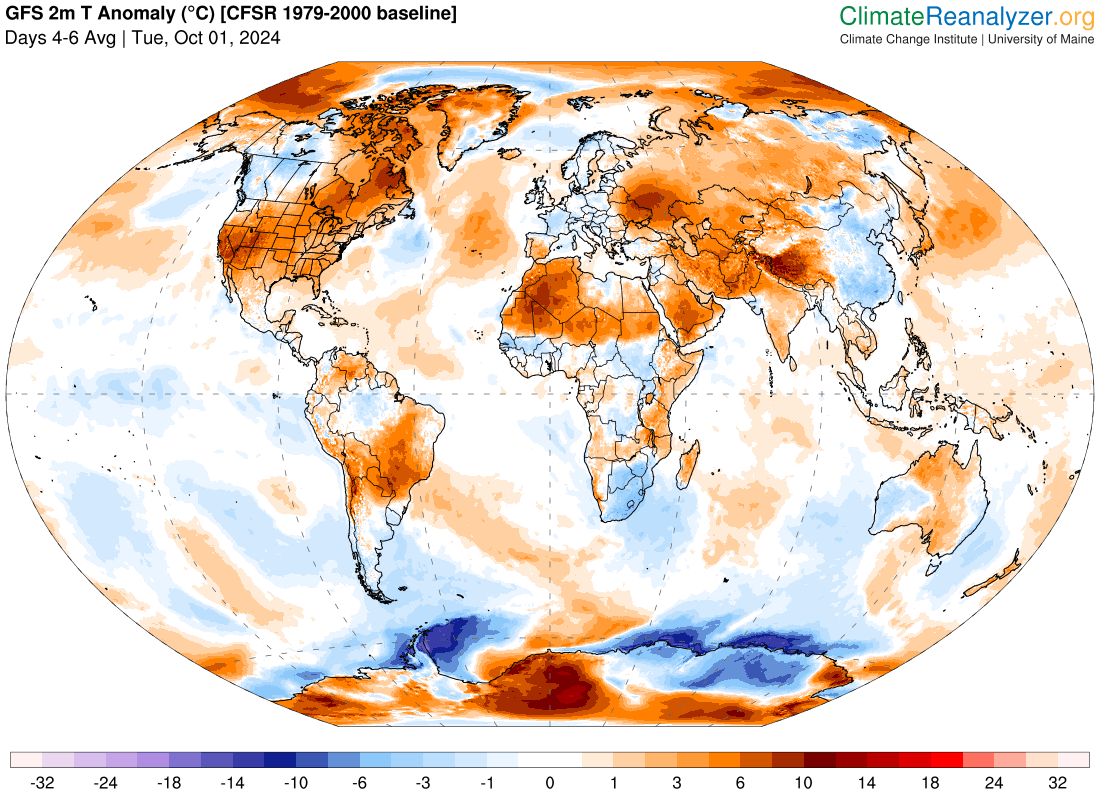
World Accumulated Precipitation
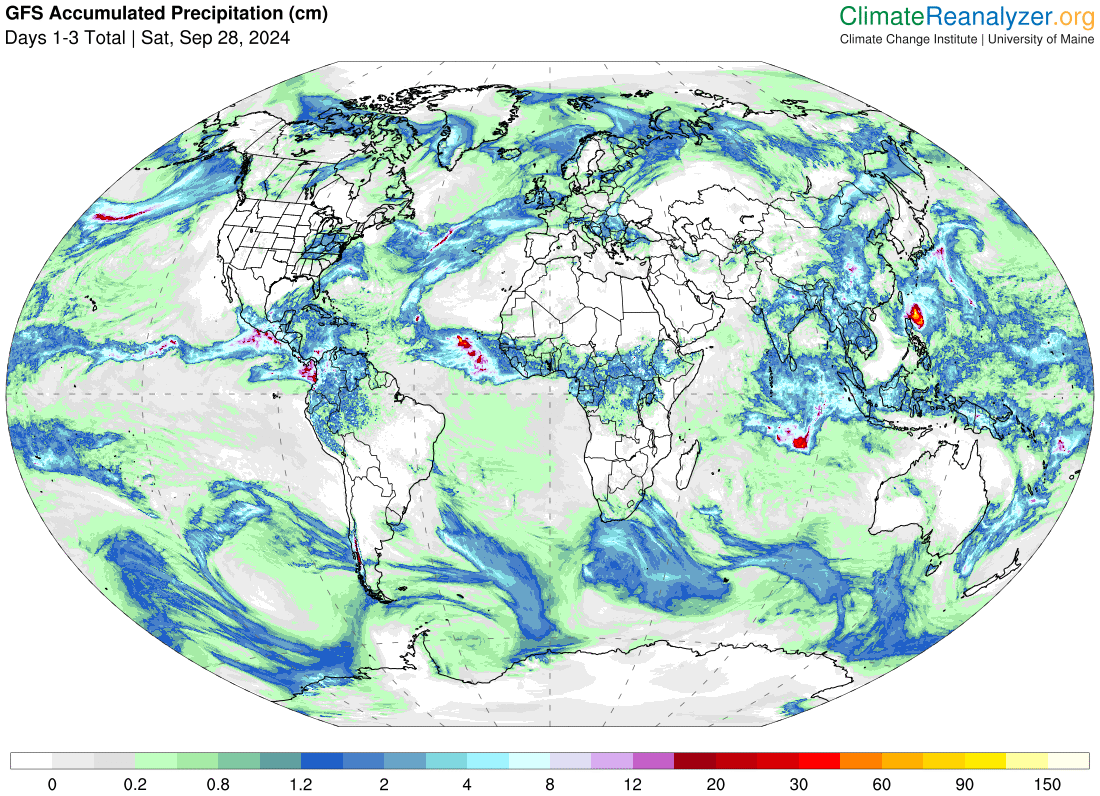

This information is provided by the University of Maine. They draw upon many different sources. There is a lot of information available at the link provided. I have just provided two useful forecasts. There are probably over a hundred different forecasts available from this source.
Worldwide Tropical Forecast (This is a NOAA Product)
This graphic updates on Tuesdays) If it has not been updated, you can get the update by clicking here Readers will only have to do that if they are reading this article much later than the date of it being published.
Information on Tropical Storms can be found HERE. Western Pacific information can be found HERE. Note that unless there is an out-of-season storm the below images will not update until the National Hurricane Center starts their seasonal update of these maps on June 1. I include them simply because there can be an out-of-season event in which case it should show up in these maps.


–
| I hope you found this article interesting and useful. |

